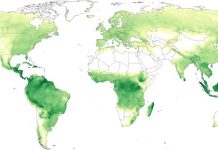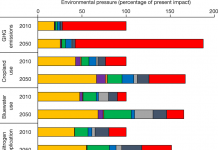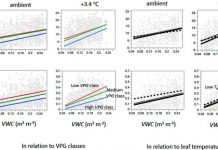【土壤真菌多样性】Akira S. Mori1* Forest Isbell2 Saori Fujii1 Kobayashi Makoto3 Shunsuke Matsuoka4 and Takashi Osono4. Low multifunctional redundancy of soil fungal diversity at multiple scales. Ecology Letters 2016 19(3): 249-259
Abstract
Theory suggests that biodiversity might help sustain multiple ecosystem functions. To evaluate possible biodiversity–multifunctionality relationships in a natural setting we considered different spatial scales of diversity metrics for soil fungi in the northern forests of Japan. We found that multifunctionality increased with increasing local species richness suggesting a limited degree of multifunctional redundancy. This diversity–multifunctionality relationship was independent of the compositional uniqueness of each community. However we still found the importance of community composition because there was a positive correlation between community dissimilarity and multifunctional dissimilarity across the landscape. This result suggests that functional redundancy can further decrease when spatial variations in identities of both species and functions are simultaneously considered at larger spatial scales. We speculate that different scales of diversity could provide multiple levels of insurance against the loss of functioning if high-levels of local species diversity and compositional variation across locations are both maintained. Alternatively making species assemblages depauperate may result in the loss of multifunctionality.
【土壤增温与根际微生物和植物病害】Menno van der Voort1 Marcel Kempenaar2 Marc van Driel2 Jos M. Raaijmakers34 and Rodrigo Mendes5*. Impact of soil heat on reassembly of bacterial communities in the rhizosphere microbiome and plant disease suppression. Ecology Letters 2016 19(4): 375-382
Abstract
The rhizosphere microbiome offers a range of ecosystem services to the plant including nutrient acquisition and tolerance to (a)biotic stress. Here analysing the data by Mendes et al. (2011) we show that short heat disturbances (50 or 80 °C 1 h) of a soil suppressive to the root pathogenic fungus Rhizoctonia solani caused significant increase in alpha diversity of the rhizobacterial community and led to partial or complete loss of disease protection. A reassembly model is proposed where bacterial families that are heat tolerant and have high growth rates significantly increase in relative abundance after heat disturbance while temperature-sensitive and slow-growing bacteria have a disadvantage. The results also pointed to a potential role of slow-growing heat-tolerant bacterial families from Actinobacteria and Acidobacteria phyla in plant disease protection. In conclusion short heat disturbance of soil results in rearrangement of rhizobacterial communities and this is correlated with changes in the ecosystem service disease suppression.
【凋落物分解的生物和非生物因素】Pablo García-Palacios1* E. Ashley Shaw2 Diana H. Wall2 and Stephan Hättenschwiler1. Temporal dynamics of b







